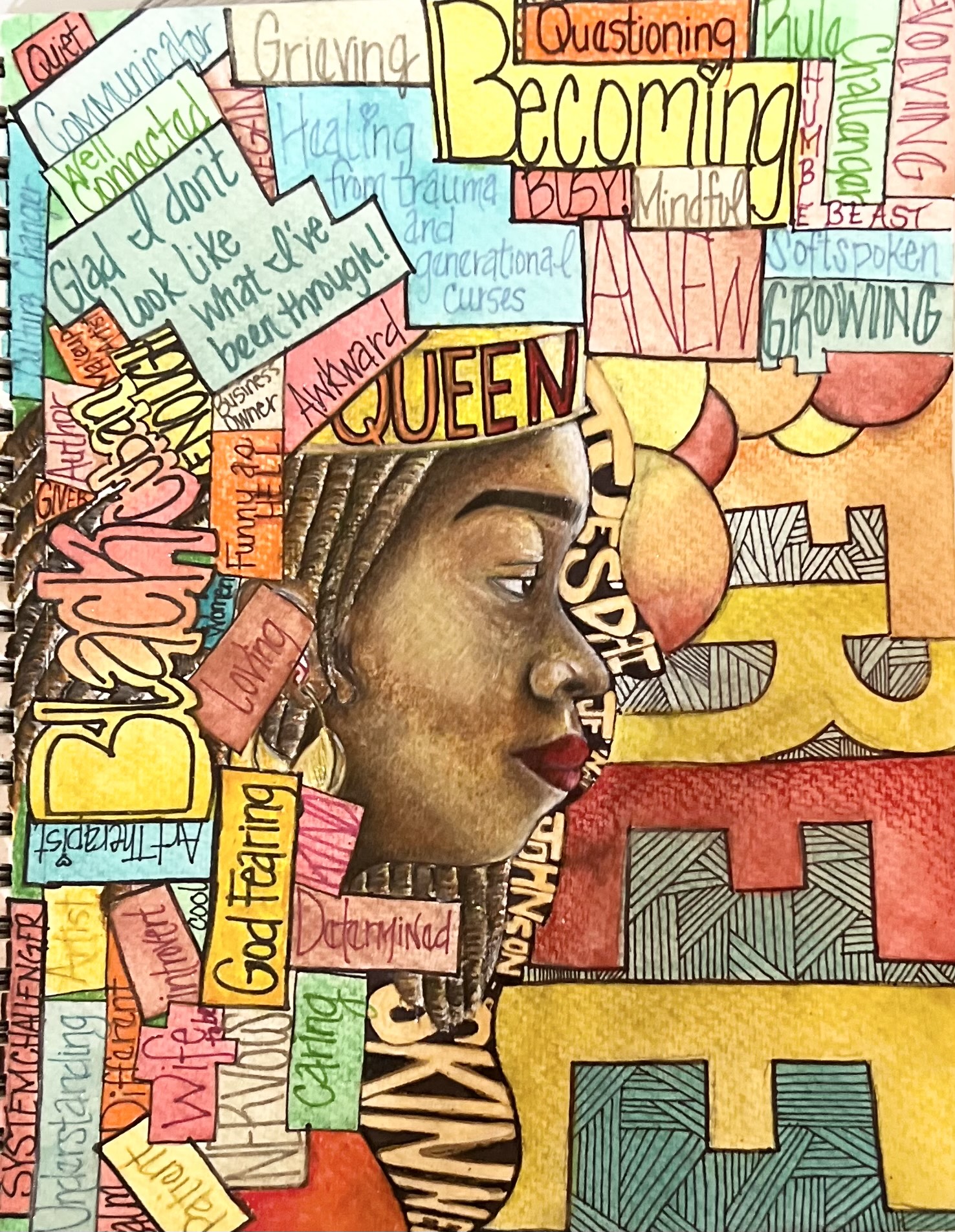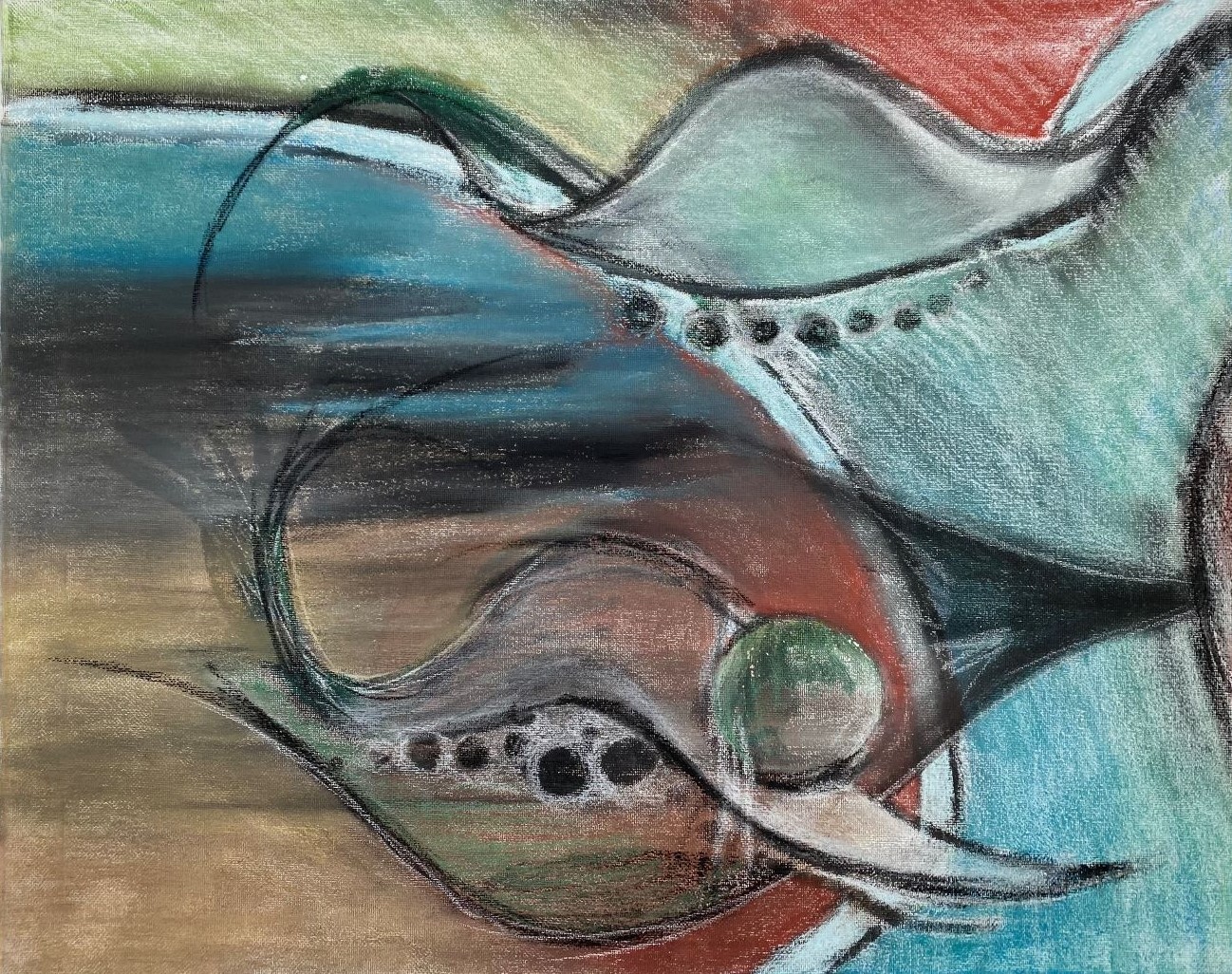The American Art Therapy Association represents a diversity of professionals, students, and organizations across the nation. We recognize and celebrate the work of our members at all levels through our Featured Member series.
February 9, 2023
What excites (or inspires) you most about your job right now?
It truly excites me to consult with mental health educational programs to inform them of the best practices to support their BIPOC students, staff, faculties, and their families. Consulting and discussing topics of diversity and inclusion with individuals with similar passion is one of the most thrilling aspects surrounding my current work. It truly is filling work to be able to contribute to increasing diversity in the mental health profession. This fuels a passion in me to offer healing to BIPOC and neighboring communities. As a clinician, the most exhilarating aspect about my job right now is witnessing the effectiveness of art therapy with my clients. I am finding that with our profession being so young, there are a great number of individuals who are unaware of the profession, or benefits of Art Therapy. To share information about art therapy with my clients, and then witness the benefits of utilizing art therapy with them has been and continues to be one of the most filling and exciting aspects of my work.

“Becoming”
by Tuesdai Johnson
Colored pencil. 2022
Has working with a particular client group shaped your professional focus or specialty? What have you learned from working with these clients?
Working with the underserved BIPOC communities in a variety of settings to include but not limited to in-home crisis intervention, residential treatment, and juvenile detention has played a huge role in my professional focus and/or specialty. In my experience, I have been given insight to the hinderances within a system meant to “support” individuals that identify as BIPOC. While working with these populations, it is very apparent to me that representation and access to services is key in the success of the advancement of the profession of Art therapy in BIPOC and neighboring communities.
How have race, diversity, and/or social justice impacted your work as an art therapist?
Race, diversity, and social justice are the foundations of the work that I do as a Black art therapist by default. Navigating such spaces my entire life has shown me many variations of grays in a very black and white society. This has allowed me to truly hear, see, and validate my clients and/or mentees lived experiences. Call it the narrative therapist in me, ha. Improving the lack of diversity has been a passion and mission of mine since having the hardest time finding a quote by Dr. Lucille Venture in graduate school for an assignment. It was so frustrating to me that I was not able to easily find a quote to complete an assignment from the first person in the country to obtain a doctorate degree in Art Therapy. This spoke volumes to me about the lack of awareness of contributions made from Art Therapists of Color, and sparked a fire in me surrounding the work I knew I wanted to as a future clinician then, and now heavily influences how I show up for my current clients. I won’t harp on being told by another cohort member to just pick someone else…that’s a story for another day, but it speaks to the work that is desperately needed in our educational systems.
What are your hopes for the future of the art therapy profession?
I would love to see the profession of art therapy become more diverse in the future. We know that art therapy works and is beneficial, and we also know that representation can play a major role in providing treatment. Naturally, a more diverse profession offers more reach for the profession across the BIPOC and neighboring communities. I also hope to continue to expand on research efforts to offer more data to the AATA surrounding ways to improve support for its BIPOC and neighboring students and constituents. Previously, I conducted research to essentially improve the lack of diversity in Art therapy and the mental health profession. Looking at the graduate school experiences of students of color (BIPOC students) attending predominately White institutions has exposed gaps in services that could offer a better and more equitable experience for BIPOC and neighboring students. It is my hope to have the support of the AATA and AATA approved art therapy programs to continue my research efforts and findings to increase diversity and inclusion in the field of art therapy education, the profession of art therapy, and the mental health profession.
What advice would you give someone interested in pursuing a career in art therapy?
I would tell anyone interested in pursuing a career in art therapy to buckle your seatbelt because you are in for a magical ride. Art therapy is an such an amazing profession. I was skeptical myself initially, but after doing some research, I found it to be the best of both worlds showcasing my passions of art and psychology. Now, after having graduated and working in the field for some time, I can assure you that the impact that you will make as an art therapist is one of the best feelings. I generally question its effects with every client and shortly thereafter witness with my very eyes the impact that art therapy can have on the clients I serve. It’s a pleasurable trippy journey that offers such a magical experience one client, one group, one family, etc. at a time. Just do it!

“Clarity” by Tuesdai Johnson
Chalk pastel on Canvas
Artist Statement
Clarity reflects the journey to seeing the value and worth in being a Black female art therapist in a world that appears unruly. It takes clarity to conceptualize a solution. My journey towards clarity parallels the hesitation in accepting that I needed glasses. I chose a life of blurred, distorted visions for years rather than risk the societal persecution associated with the image of glasses, failing to realize the many routes available for improving sight. Glasses, of an “acquired” taste came to mind instantly, neglecting the various structures, hues, and designs accessible. Contacts not considered. Sticking a lens in my eye seemed liked a violation of self at the time, forgoing the support provided throughout understanding the process, and the potential to hide what seemed like an imperfection. Clarity was rooted when a life of blur no longer outweighed the risk of, “societal persecution.” Clarity has grown in the opportunities and accomplishments and will flourish when fears are faced. Clarity stands as a reflective reminder of the journey to “becoming.”
Clarity provided pride in my identity as a Black, female, cisgender, registered art therapist, licensed resident in counseling, published author, owner of Closing the Gap, LLC, and self-proclaimed world healer. With contact lenses, and the occasional feature from a pair of blue and leopard accented glasses there is pride in both improved sight and understanding the key in acquiring clarity. Clarity is the journey to “becoming,” after realizing your purpose in life. No matter how many achievements I receive, barriers I break, generational curses I overcome, the racism I continue to face is not lost on me. Through clarity in this seemingly messy world, I created what I feel could be the key to healing the world. The thing about clarity to use glasses as a metaphor, you must want to put the glasses on to see. It cannot be forced because this results in failure. The cool thing about accepting that you need glasses is exploring the new possibilities that they offer. You can have blue frames with leopard spots, alter the shape and/or color, and if one is able contacts, are an option. Clarity with something that was created to predate the beginning of anew. It took me some clarity in a world that feelings so messy to see the beauty and healing and comes with being a Black art therapy.
About Tuesdai Johnson, MS, ATR, LPC-R

Tuesdai is a business owner, published author, artist, registered Art Therapist, and licensed resident in counseling. As an Art Therapist, Tuesdai has made it her mission to bring awareness to the holistic healing effects of mental health profession of Art therapy. She received a Bachelor of Science in Psychology from Mississippi State University, and a Master of Science in Art Therapy and Counseling from Eastern Virginia Medical School. Since beginning research at Eastern Virginia Medical School, Tuesdai has continued working towards improving the lack of diversity within the field of Art Therapy and mental health professions alike, publishing a co-authored peer reviewed brief report titled, Art Therapy Students of Color: The Experience of Seven Graduate Students, in addition to the recently co-authored peer reviewed article titled, BIPOC Art Therapists: Antiracism Work Through the Virtual Circle.
Tuesdai is the owner of Closing the Gap (CTG), where they specialize in Black, Indigenous, and People of Color’s (BIPOC) mental health and wellness. CTG helps mental health educational programs improve diversity and inclusion in their practices in efforts to reach more people in the BIPOC and neighboring communities offering a variety of services.
